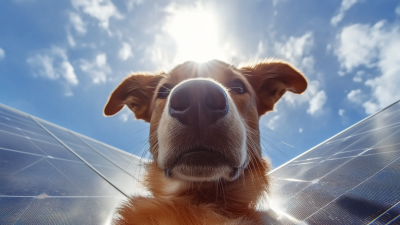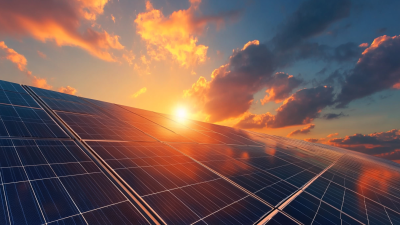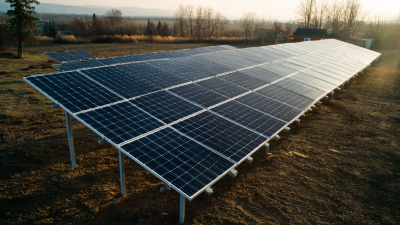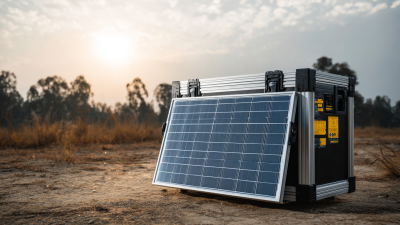Tel : 94870 36000, 94860 36000, 94890 36000
Transform Your Home with Innovative Solar Power Solutions for Sustainable Living
In an era where sustainability and energy efficiency are paramount, the integration of solar power solutions into our homes presents an unprecedented opportunity to transform not only our living spaces but our lifestyles as well. As the world progressively shifts towards renewable energy sources, innovative solar power solutions stand at the forefront, offering practical and eco-friendly alternatives to traditional energy methods. From reducing electricity bills to minimizing carbon footprints, these solutions empower homeowners to take control of their energy consumption while contributing to a greener planet.

By harnessing the sun's immense energy, individuals can create self-sufficient environments that not only meet their energy needs but also reflect their commitment to sustainable living. This exploration into solar power solutions opens the door to a future where homes are not just places of comfort, but also exemplars of environmental stewardship.
Table of Contents
[Hide]
Explore Different Types of Solar Power Systems for Home Use
When considering sustainable living, solar power systems for home use offer innovative solutions to reduce energy costs and environmental impact. There are primarily three types of solar power systems: grid-tied, off-grid, and hybrid systems. Grid-tied solar systems connect to the public electricity grid, allowing homeowners to utilize solar energy while having backup power from the grid in case of insufficient sunlight. According to the U.S. Department of Energy, as of 2023, nearly 97% of residential solar installations are grid-tied, driven by decreasing installation costs and increasing efficiency of solar panels.
Off-grid solar systems, on the other hand, provide complete independence from utility companies, making them ideal for remote locations. These systems usually incorporate battery storage to ensure a continuous power supply, even during cloudy days or at night. A recent report from the National Renewable Energy Laboratory indicates that off-grid residential solar installations have grown by 12% in the last year, as homeowners seek resilience against power outages and rising energy prices.
Hybrid solar systems combine the best features of both grid-tied and off-grid solutions. They offer the advantages of grid connectivity alongside the ability to store energy in batteries for use during outages or peak energy demand times. As the solar industry progresses, it is projected that hybrid systems will account for over 30% of new residential installations by 2025, as reported by Solar Energy Industries Association (SEIA). This diverse range of solar power systems empowers homeowners to choose the best solution that aligns with their sustainability goals and lifestyle preferences.
Assessing Your Home’s Suitability for Solar Power Installation
Assessing your home's suitability for solar power installation is a vital step towards embracing sustainable living. According to the U.S. Department of Energy, about 75% of homes in the United States are suitable for solar panel installation, primarily influenced by factors such as roof orientation, pitch, and shading. A south-facing roof that receives ample sunlight throughout the day is optimal for harnessing solar energy, making it crucial for homeowners to assess their roof's characteristics before investing in solar technology.
Moreover, understanding the local climate can significantly impact solar power efficiency. The National Renewable Energy Laboratory (NREL) reports that solar panel efficiency can vary based on geographic location and weather patterns, with sunnier regions yielding better energy production. Homeowners should consider conducting a solar site assessment, which involves analyzing potential obstructions like trees or buildings that may cast shadows on the panels. By making informed decisions based on these assessments, homeowners can maximize their solar power investment, reduce energy costs, and contribute to a more sustainable future.

Step-by-Step Guide to Installing Solar Panels Yourself
Installing solar panels yourself can seem daunting, but with the right approach and information, you can transform your home into a sustainable powerhouse. According to the Solar Energy Industries Association (SEIA), the cost of solar installations has dropped by over 70% since 2010, making it more accessible for homeowners. A step-by-step guide simplifies the process, ensuring you're equipped to harness the sun's energy efficiently.
Tips for a successful installation include ensuring you have the right tools, such as a solar panel mounting kit and a level. Conduct a thorough assessment of your roof's structural integrity and solar exposure before commencing. Additionally, taking the time to understand your local regulations and permitting processes can save you time and prevent unexpected hurdles.
When installing, start by mapping out your panel layout based on your roof size and the amount of sunlight you receive. It's crucial to connect your system to a quality inverter to maximize energy conversion. Recent studies indicate that homes with solar power systems can increase their property value by up to 4%, illustrating that investing in solar is not only environmentally sound but financially wise.
Maximizing Energy Efficiency with Solar-Assisted Appliances
In today's quest for sustainability, maximizing energy efficiency at home has become more important than ever. One effective way to achieve this is through the integration of solar-assisted appliances. These innovative tools harness solar energy to reduce reliance on traditional power sources, providing significant savings on electricity bills while minimizing the carbon footprint.
Solar-assisted appliances, such as solar water heaters, solar refrigerators, and energy-efficient dishwashers, are designed to work optimally with solar panels. By utilizing renewable energy, these devices not only function effectively during sunny days but also integrate seamlessly with home energy systems. Homeowners can monitor their energy consumption, making adjustments to use solar power during peak sunlight hours, further enhancing the efficiency of their household. As more people recognize the benefits of incorporating solar energy into their daily lives, the transition to sustainable living becomes increasingly accessible and appealing.
Maintaining Your Solar Power System for Long-Lasting Performance
Maintaining a solar power system is crucial for ensuring its long-lasting performance. Research indicates that dust accumulation can significantly degrade the performance of solar photovoltaic (PV) systems, particularly in regions with high temperatures and frequent dust storms. A comprehensive review highlights that optimal cleaning techniques can enhance yield across varied environmental conditions, advocating for advanced cleaning methods. Contacting services that utilize AI-integrated autonomous robotics can be particularly effective, as drones and ground-based systems can not only clean panels but also conduct predictive maintenance, ensuring that systems operate at peak efficiency.

Moreover, integrating IoT-based automated cleaning and monitoring techniques is reshaping how solar installations are maintained. These innovative systems provide real-time data on panel efficiency and cleaning needs, which can extend the productive lifespan of solar panels significantly. As studies suggest, while the average lifespan of residential solar panels is about 25 years, proactive maintenance can enhance performance and longevity, ultimately making solar energy a more sustainable option. By adopting these technological advancements, homeowners can maximize their solar investments and contribute to a greener future.
Related Posts
-

Top 10 Solar Panel Solutions from Chinese Manufacturers at the 137th Canton Fair
-

Quality That Earns Global Respect Best Solar Panels Solutions Made in China
-

Unlocking Success: Essential Tips for Sourcing Premium Best Home Solar Suppliers Globally
-

7 Compelling Reasons to Invest in a Solar Power Generator Today
-

Exploring Diverse Alternatives in Solar Panels Solutions for Global Buyers
-

Overcoming Challenges in Solar Panel Solutions: What You Need to Know

